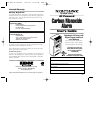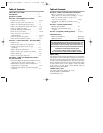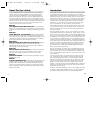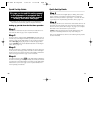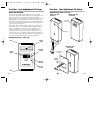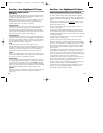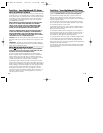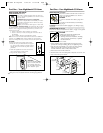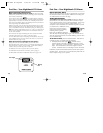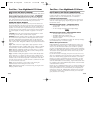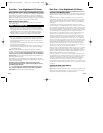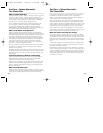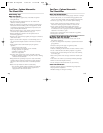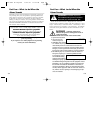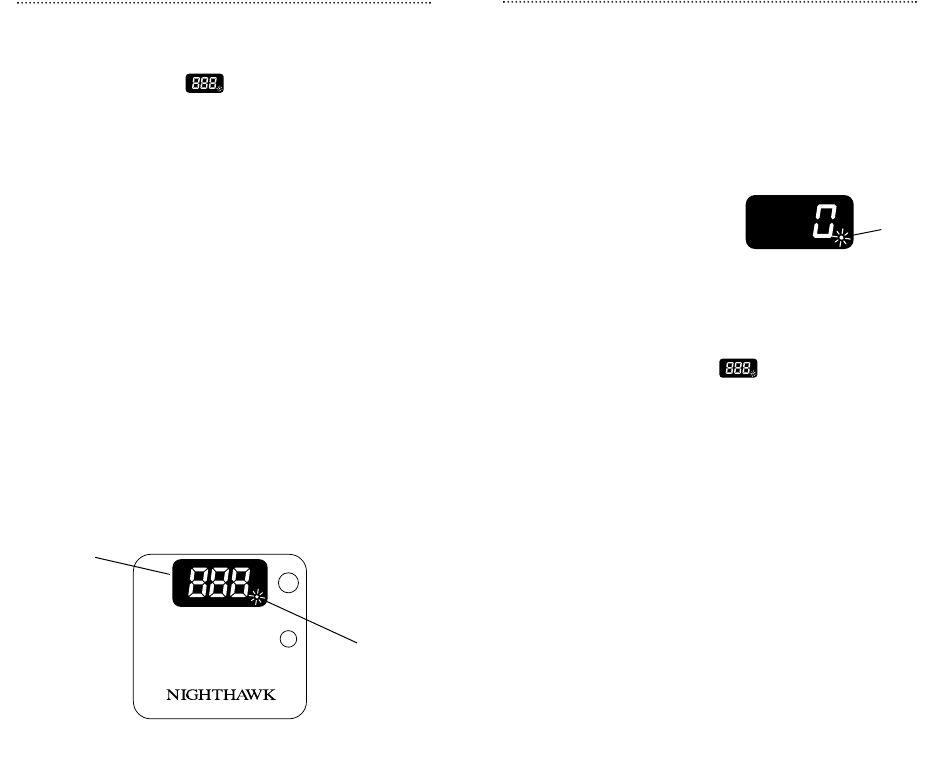
Part One – Your Nighthawk CO Alarm
Part One – Your Nighthawk CO Alarm
Normal Operating Characteristics
When you first power up the CO alarm, the alarm will sound
briefly to let you know the CO alarm is receiving power and that the
alarm circuit is functioning.
You should see three eights on the digital display, indicating
the CO alarm is in the start-up mode. The three eights will remain for
approximately 20 seconds. You should see a blinking red dot to the
lower right of the digital display. The blinking dot shows that the CO
alarm is operating. See illustration below.
Within 20 seconds, your CO alarm will start monitoring for CO, then
the first reading will appear on the digital display. The number indi-
cates a measurement of carbon monoxide in parts per million (ppm).
Note: The number will probably be zero (0). This is a normal condi-
tion for most households and shows that no measurable amount of
CO has been detected.
The CO alarm has begun monitoring the air for carbon monoxide
and will continue to do so as long as it receives power.
For more information about CO readings and the effects of CO expo-
sure at different levels over time, refer to the chart on 3-2 as well as
the information on pages 4-1,2,3.
When the CO alarm is unplugged or loses power, a
fading alarm will sound briefly to alert you that it has been
disconnected from its power source. For example, this fading alarm
will sound in the event of a power outage. A brief alarm will also
sound to alert you when the power is restored.
For directions on how to test your alarm, see next column.
For information about how the unit alarms, turn to page 5-2.
For information about alarm’s malfunction alert, turn to page 1-12.
PPM of CO
CARBON
MONOXIDE
ALARM
TEST-
RESET
PEAK
LEVEL
Move to Fresh Air
Three Eights
Blinking
Dot
How to Test Your Alarm
There are two aspects of the CO alarm’s operation that can be tested:
the electronics and the sensor response. Instructions on testing each
are outlined below and on the next page.
Testing the Electronics
You should test the alarm once a week, following the directions
listed below. If at any time you test the alarm and it does not per-
form as described below, have it replaced immediately. Turn to page
1-12 “How to know if your CO alarm is malfunctioning” for a
description of the characteristics of a malfunctioning alarm and what
you should do if a malfunction occurs.
Observe the CO alarm weekly to
make sure the red dot is blinking,
indicating normal operation.
If the dot is not blinking, unplug the
alarm for three minutes, then plug in again. This will clear the CO
alarm for restart. If the dot does not resume blinking, your CO alarm
may be malfunctioning.
To test the CO alarm, press the Test/Reset button. If the alarm is
operating properly, you should notice the following:
• The display shows three eights , and then shows a
number (usually around 200). You should then hear 4 quick
beeps – followed by 5 seconds of silence – followed by 4 quick
beeps. The unit will then show the three eights for several
seconds. It will then return to monitoring for carbon monoxide.
Familiarize yourself and household members with the alarm pattern
described above. In the event of a CO incident, this pattern will con-
tinue to repeat as long as CO is present.
PPM of CO
Blinking
Dot
1-10
1-9
810-1009 AC Digital 11/13/01 11:22 AM Page 16



